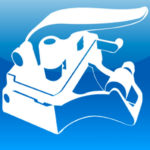May 5, 2015, 09:00 AM
https://www.aotg.com/sound-devices-6-series-weathers-extremes/
NASHVILLE, TN, MAY 5, 2015 - When veteran Sound Mixer Christopher Brown finds himself on the edge of steep cliffs, with one chance to capture audio despite harsh elements, he relies on Sound Devices line of mixer/recorders.
With more than 23 years of experience, he has traveled to many remote places such as the jungles of Papua New Guinea, the desert of Timbuktu in Mali, Africa and the Galapagos Islands. For years, his gear bag held a separate 442 field mixer and the 744T four-channel audio recorder, both by Sound Devices, specialists in portable audio and video tools built for the rigors of field production.
However, a growing need to record more than four channels of audio led him in a new direction when he joined a crew headed to the sandy landscape of Turkmenistan for a National Geographic shoot at the edge of a flaming methane gas crater known by locals as the Gateway to Hell. For that project, he rented the Sound Devices 664 Production Mixer.
"That was my first experience with the combined mixer recorder," he says. "With the 664, I had five people on wireless mic, and the boom, and so that worked well."
After Turkmenistan, when he returned the 664, he learned about Sound Devices 633, a smaller six-channel mixer with integrated 10-track recorder with features similar to the 664.
"Basically, the 633 had the same menus, the same workings of the 664, which I'd just used, and I really liked the mixer and the multi-track recorder all being in one unit. The 633 had all the tracks I needed and it was in a compact package. That's key when you go to the remote places I have to work in."
His most recent work was in the U.S. as a member of the Red Bull production crew, but it turned out to be just as extreme. He again found himself on the edge of a deadly drop-off, but unlike the fiery heat of the Darvaza crater, this shoot was glacial. Brown was the audio recordist for the first ascent of a partially frozen Niagara Falls-a project that further proved why having a compact, all-in-one mixer and multi-track recorder is so beneficial.
"Most of the shows I do, we're in such harsh environments that I need to record. And recording is so important to me; because of conditions, I'm usually not tethered to the camera. We're separated by distance, or we have to move around. I'm sending a two-channel, left and right, wireless camera hop, but the cameramen have a hard time monitoring sound from the camera when perched on the side of a cliff. It's critical for me to record and multi-track. We can't always rely on sound-to-camera."
Like the rest of the crews he has worked with, he also has to deal with the elements. In the case of the Niagara Falls shoot, which included spending hours outside with temperatures in the teens, showered with freezing spray and snow flurries, and having to navigate the icy landscape-all while capturing six channels of professional, broadcast quality audio.
"I was donned in a climbing harness and crampons, and I used the ultra-compact Sound Devices 633 mixer, which worked like a charm. All the inputs helped me deal with four climbers on wireless mics, plus recording walkie radio chatter."
A typical challenge faced on his expeditionary-style productions is power, because the shoots sometimes last for days or weeks in remote areas where electricity is scarce.
The 633 has a unique quad-power supply with PowerSafe(tm) technology, so the unit can operate from any of four power sources, including exterior DC, six AA batteries, and two L-mount lithium ion batteries. It's the last two that have worked well for Brown.
"I find with the two, battery one and two, I can get through a long day fine."
In the event of a power loss, the 633's PowerSafe feature provides 10-seconds of back-up power so the device can safely stop file operations and shut-down. While PowerSafe adds peace of mind, Brown says he's never had to use it while on set.
When asked what features on the 633 mean the most, he says, "Mostly for me it's the size and the inputs, and I like the timecode jamming. Timecode jamming is everything for matching audio."
The timecode jamming feature proved vital on both the Niagara Falls shoot as well as a 20-day production to film underwater cave diving in the Bahamas. In both cases, Brown says, "During all of the action shots, no sound was going to camera, so it was all reliant on timecode and the jamming of our timecode because they resync it back in post." He admits to being a bit concerned at first, even offering to send a scratch track of audio to help sync audio to video, but he says, "From the Bahamas and from Niagara Falls, they had no issues."
In addition to the 633, his gear bag includes Lectrosonics 400 Series wireless mics, SMV mini-wireless microphone transmitters, Sennheiser 416 boom mic, Lectrosonics SRB dual-channel camera hop and Sony MDR-7506 professional headphones.
The 633 offers three high-bandwidth mic- or line-level signals on XLR connectors, and include phantom power, high-pass filter, input limiter and variable pan. Three additional line-level inputs on TA3 (mini-XLR) connectors provide flexibility for more complex productions. All inputs are assignable to its six output buses, and all inputs plus outputs can be recorded to individual tracks. The 633 records up to 10 tracks of 24-bit broadcast WAV files or combinations of WAV and timecode-stamped MP3 files to SD and/or CompactFlash cards. With its dual card slots, the 633 can record content to either or both cards simultaneously.
"I guess the one thing that a lot of people have valued, and what I value too...with the 633, I love how I can record WAV files to the CF card and then to the SD card I can record audio MP3 transcription files that have a timecode stamp in it, in the metadata. I use that a lot. And I'm able to say to the client at end of day, 'We can email these MP3s out for transcription.' I've used that feature the most."
Sound Devices, LLC designs and manufactures portable audio mixers, digital audio recorders and related equipment for feature film, episodic television, documentary, news-gathering, live event and acoustical test and measurement applications. Video Devices is a brand of Sound Devices for their digital video recorders and related products that address a range of multiple-source video productions, including fast-paced, mission-critical studio applications, live sports, live events, and mobile production.
Founded in 1998, the company designs and manufactures both brands from their Reedsburg, Wisconsin headquarters with additional offices in Madison, Wisconsin. For more information, visit the Sound Devices and Video Devices websites: www.sounddevices.com and www.videodevices.com.
When veteran Sound Mixer Christopher Brown finds himself on the edge of steep cliffs, with one chance to capture audio despite harsh elements, he relies on Sound Devices line of mixer/recorders.
#sound devices



